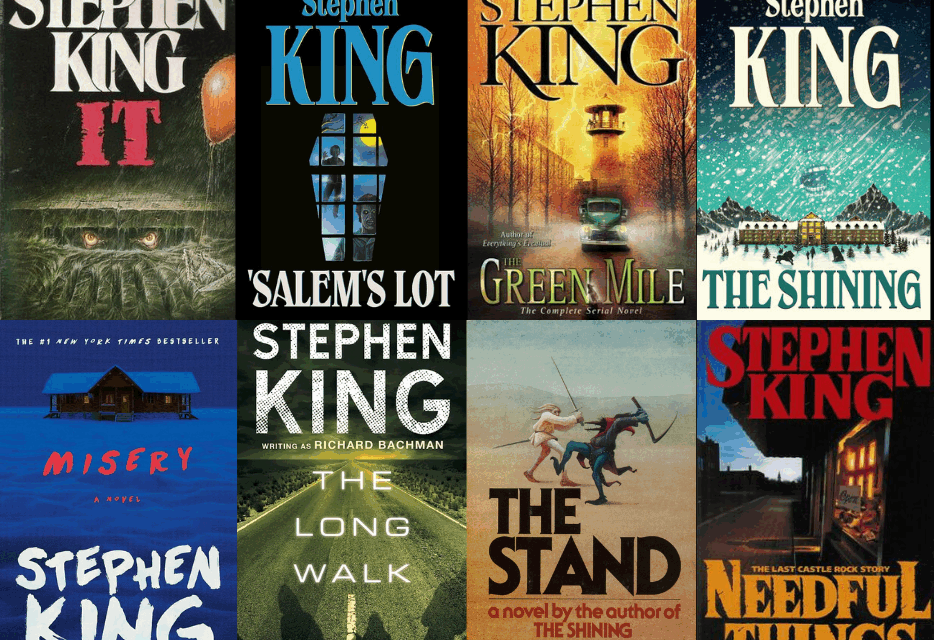It’s been a great year to be a Stephen King fan. Well, almost every year is great for King fans, given that the maestro of nightmares is still churning out 1-2 great books a year with no visible plans to slow down, but halfway into the year and we’ve already seen quite a few exceptional adaptations in 2025. Oz Perkins’ The Monkey was a bloody laugh riot. Mike Flanagan’s excellent The Life of Chuck gives us moving hope at the end of the world… or, at least, of a life, while The Institute is shaping up to be a solid and engaging adaptation on MGM+.
The Long Walk was the first King wrote (at age 19), though not the first he published, and the second King novel published under the pseudonym Richard Bachman. Lionsgate’s adaptation of The Long Walk is the latest effort to bring King to the big screen, and it’s a moving, bleak, and intense affair that showcases the solidarity and goodness of everyday humans against the most harrowing of authoritarian situations.
Ranking King’s work is a Herculean task, given that King’s massive bibliography contains 65 novels/novellas and literally hundreds of stories that span horror, fantasy, pulpy crime stories, sci-fi, and other genres. To celebrate The Long Walk, here’s one fan’s attempt at ranking the 19 best Stephen King stories, pulled straight from the depths of Todash Space.
Stephen King’s 19 Best Stories
19. Needful Things (1991)
Needful Things is a brilliant Faustian tale about a new shop, Needful Things, opening in Castle Rock, Maine. Its proprietor Leland Gaunt has everything you need and the monetary prices are low, but he always exacts the price of a prank. Chaos spirals, revealing that Gaunt may be more (and more nefarious) than he seems. Needful Things is a brilliant riff on the Devil’s bargain, and the warning to be careful what you wish for. The journey in Needful Things is great, but the one element holding it back is a finale that’s a bit less satisfying than the killer journey preceding it.
18. ‘Salem’s Lot (1975)
‘Salem’s Lot was King’s second novel, centering writer Ben Mears, who returns to Jerusalem’s Lot, Maine to write his next great novel. He wants to write about a long-abandoned house, now purchased by Austrian immigrant Kurt Barlow. A young boy, Ralphie, disappears around this time, and we come to discover that Barlow is a vampire. As he proceeds to turn increasingly large numbers, it provokes Ben and his friend Matt to oppose the rising vamp menace. It’s a fun vampire yarn full of memorable moments and a real sense of menace from Barlow.
17. “Children of the Corn,” collected in Night Shift (1978)
A short story with an idea so good it sparked a whole franchise, “Children of the Corn” tells the tale of unfortunate passers-by in rural Nebraska who run into a town where no one is older than 19. Years ago, all the town’s children killed every single adult in the name of a mysterious corn-dwelling entity, “He Who Walks Behind The Rows.” It’s a stunning little piece of folk horror full of blasphemous subversion of Christian imagery, an eerie youth-corrupting entity, and immaculate scene-setting in a tight, memorable package. Simply a fantastic story.
16. “1408,” collected in Everything’s Eventual (2002)
Another fantastic work of short fiction, “1408” began as a writing example in King’s masterful On Writing before its expansion into a full-fledged story. Telling the story of Mike Enslin, a writer about supernatural tales that doesn’t believe in the supernatural, Mike checks into the mysterious Room 1408. He’s informed by the hotel proprietor that the room isn’t haunted (ghosts were once human), and 1408 is something else entirely. Mike doesn’t believe him… at first. 1408 is first and foremost a fun, well-told story, as well as a great showcase of King’s ability to spin something unique out of a common set-up. It also shares a little lineage with one of King’s best novels, The Shining, for its development of a physical space that has a mind, and a predatory drive, of its own.
Stephen King Top Stories #15-11

15. Under the Dome (2009)
Arthur C. Clarke once wrote that “Any sufficiently advanced technology is indistinguishable from magic,” and King’s sci-fi horror outing Under The Dome is one of the best illustrations of this “law” yet. Under the Dome takes place over eight days in Chester’s Mill, a town suddenly separated from the rest of the world by an invisible dome-shaped field. Not to spoil anything, it’s a great work of sci-fi horror that (like “The Mist”) examines what becomes of us when we’re packed within a claustrophobic setting and set against powerful, hard-to-understand forces.
14. The Outsider (2018)
Terry Maitland, beloved local coach, is publicly arrested for the vicious rape and murder of Frankie Peterson, sending the shocked town of Flint City, OK into a spiral of mourning and grief. Though the evidence against Maitland is solid; so, too, is the proof that he couldn’t have been there, provoking a serious investigation revealing a dark entity called El Cuco may have a connection. The Outsider is an intense and interesting novel with a memorable investigation into one of King’s most menacing supernatural foes.
13. From a Buick 8 (2002)
King has made toys, hotels, hotel rooms, and all sorts of other objects scary, and he’s made cars scary, twice. From a Buick 8 is the second, centering the memories of Pennsylvania State Police Troop D, all centered around a vintage Buick Roadmaster that is far from a normal vehicle and which is associated with a number of supernatural phenomena. It may, indeed, be a portal to another realm. From a Buick 8 is fantastic, and it’s a continually surprising read.
12. The Long Walk (1979)
King’s The Long Walk was his first novel written, though it was published some 13 years later under his Richard Bachman pseudonym. A dystopian thriller, it takes place in an alternative United States where one teenage boy from each U.S. state signs up each year for a walking contest, strictly governed by rules, where only one survives (and the winner gets anything their hearts desire). It’s bleak, sad, and decidedly grounded… there’s no trace of the supernatural or interconnected elements that pervade the rest of King’s work. As a consequence, it’s a tragic march through grounded human evil while spending considerable time with sympathetic, doomed boys. It’s harrowing and heartbreaking, and can’t be missed.
11. 11/22/63 (2011)
One of King’s most unique novels, 11/22/63 is an alternate history science-fiction novel about a time traveler who attempts to prevent JFK’s assassination. It’s a rarity in King’s oeuvre in that it’s a few steps outside his usual horror trappings, but it still boasts immaculate world-building, novel plotting, and even a little romance. King even published an alternative ending on his website in 2012, just in case you aren’t yet ready to leave this novel tome about the implications of time travel.
Stephen King Top Stories 10-6

10. “The Jaunt,” collected in Skeleton Crew (1985)
“The Jaunt” is a stunner of a short piece of sci-fi horror, set in a world where instantaneous long-distance travel called “the Jaunt” is possible. The trick: for unknown reasons, high-functioning living beings must be unconscious, or else they end up dead or insane on the other end. I won’t spoil anything, but “The Jaunt” is very good, both as horror (that ending!) and as top-shelf science fiction.
9. Doctor Sleep (2013)
King doesn’t do a lot of straightforward sequels, outside the book series The Dark Tower, the Bill Hodges books, and the myriad little connections between many of his works that technically provide small follow-ups on stories from time to time. It’s particularly interesting that King followed up one of his most iconic novels, The Shining with a stellar sequel revisiting a now-adult Danny Torrence trying to protect Abra Stone, a girl who shines brightly, from the True Knot, psychic vampires of sorts who feed off the psychic energy released when children who shine are viciously tortured. Doctor Sleep is a great follow-up to the events of The Shining that expands the world in unique ways, with memorable villains, a bonkers-level good ending, and a satisfying conclusion for Danny Torrance. It’s surprising that King followed up The Shining, but also quite lucky that it’s actually this satisfying.
8. Misery (1987)
King is a prolific writer par excellence, with a dedication to the literary form that rivals just about any writer you could pit against him. Given his experience and dedication to the art, alongside the old adage to ‘write what you know,’ and it’s unsurprising how many ways he’s found to pull horror out of such a solitary art. When novelist Paul Sheldon gets caught in a blizzard and crashes, his new manuscript in his car, he’s rescued by fan and former nurse Annie Wilkes. She has issues with the manuscript, and forces Paul to write a new novel while she threatens and tortures the endangered writer. It’s a claustrophobic cat-and-mouse game between a pair of expertly written characters, and an easy novel to burn through while trapped in a wintery cabin.
7. The Green Mile (1996)
The Green Mile was initially published as a six-volume serial novel before its combination into a single-volume work, largely set within the Cold Mountain Penitentiary. Inmate John Coffey is a probably innocent Black man on death row for the rape and murder of two white girls. More interesting still is that John has a supernatural ability to heal, and as new inmate Paul Edgecombe becomes convinced of Coffey’s innocence, he tries to help him. It’s a moving, tragic, but beautiful story thanks to some of King’s finest-written characters.
6. “The Mist,” collected in Skeleton Crew (1985)
King is a fine purveyor of unique, memorable monsters, and he’s just as skilled at drawing out the monstrosities that the human heart is capable of. “The Mist,” easily one of his best novellas, has both. The small town of Bridgton, Maine becomes covered by a thick, opaque fog. That fog is full of murderous monstrosities from a dark corner of reality, trapping a few townsfolk in a supermarket, where apocalyptic religious beliefs, anxieties, and personal issues begin to divide the townsfolk. King has often returned to themes around how otherworldly threats affect us, but “The Mist” is an incredible microcosm of the topic, boasting some of his most interesting explorations of the dangers of religious fanaticism and coolest beasts alike.
Stephen King’s Top 5 Stories

5. Revival (2014)
Inspired by influences including Frankenstein and Arthur Machen’s The Great God Pan, Revival sees electricity-obsessed ex-minister Charles Jacobs find a new protégé in Jamie Morton, but the pair’s experiments into electricity reveal things about the nature of reality that shock Jamie to his core. Revival is a bit slow in pacing but masterful in the build-up, and the reveals are some of King’s bleakest and most jaw-dropping. Knowing King, that says a lot. Revival is so good and ends so powerfully that I seriously thought about putting it as number 1, but it’s simply too new by comparison to the all-timers that follow.
4. The Shining (1977)
The Shining centers Jack Torrance, an aspiring writer who takes a job as a winter caretaker of The Overlook Hotel. It’s eerie when empty, but Jack lives in the massive space with his family Wendy and psychic son Danny (he has a clairvoyance known as “shining”) in hopes that he can make some cash while working fulfilling his literary ambitions. The hotel has a troubled history, however, and between Jack’s propensity for alcoholism and mental distress, the hotel’s murderous ghosts, and the sentient hotel’s desire to consume Danny’s shine (yes, the Overlook is a malicious, living space – genuine cosmic horror stuff), staying at the Overlook is a bad, bad time. In The Shining, King develops rich characters and an incredible sense of atmosphere to create a genuinely fantastic, unforgettable novel.
3. The Dark Tower (1982-2012)
We’re at the point in our countdown where each entry has a very strong claim to being King’s best, and choices say a bit more about the chooser than the material. The Dark Tower series, an imaginative eight-novel epic fantasy series that connects many of his other works. It’s sprawling, fantastic, and contains one of his best protagonists, Roland Deschain the Gunslinger, attempting to preserve order in the multiverse against some of King’s best antagonists, the sorcerer Randall Flagg and the powerful chaotic entity, the Crimson King. They’re epic in every sense of the word.
2. The Stand (Complete, 1990)
The Stand takes place in an America positively wrecked by the deadly superbug “Captain Trips,” decimating the global population. Dreams bring together a virtuous community in Boulder, Colorado led by Mother Abagail, while Las Vegas is ruled by the murderous and magical Randall Flagg, pitting the two communities of survivors on an inevitable collision course. The Stand was initially published in 1978, but the best version is the 1990 Complete and Uncut rerelease. It’s a monumental tale about the struggle between good and evil, with a now-legendary mythmaking around it that rivals any single novel you’d put against it.
1. It (1986)
It is one of Stephen King‘s most deservedly famous stories, built around the Losers Club, a group of outsider kids who experience a terrifying entity in their youth and have to reunite as adults to defeat it once-and-for-all. Describing it that way is almost trivial, given how iconic Pennywise the Dancing Clown has become. Pennywise is the main chosen form of a terrifying, shape-shifting entity from the darkest corners of the universe, feeding off fear and loving death and destruction. It is monumental, frightening, sad, and truly imaginative, as well as a stunning embodiment of childhood fears. Above all else, though, is how it invented one of the coolest invented monstrosities in our era.





![[Review] Fear the Walking Dead – J.D.](http://18.211.146.234/wp-content/uploads/2021/05/FTWD_613_RG_Roadkill-440x264.jpeg)
pet sematary where?
HOW’S “THE TALISMAN” NOT ON THE LIST?!? 😲
where is RITA HAYWORTH AND THE SHAWSHANK REDEMPTION?
Enjoyed the list, very glad to see “The Mist” and “The Jaunt” get mentioned. Typo under Green Mile: italicized title says “Greem”.
Thank goodness Pet Sematary was omitted. I couldn’t stand it or the movies made about it. I am allowed my opinion too.